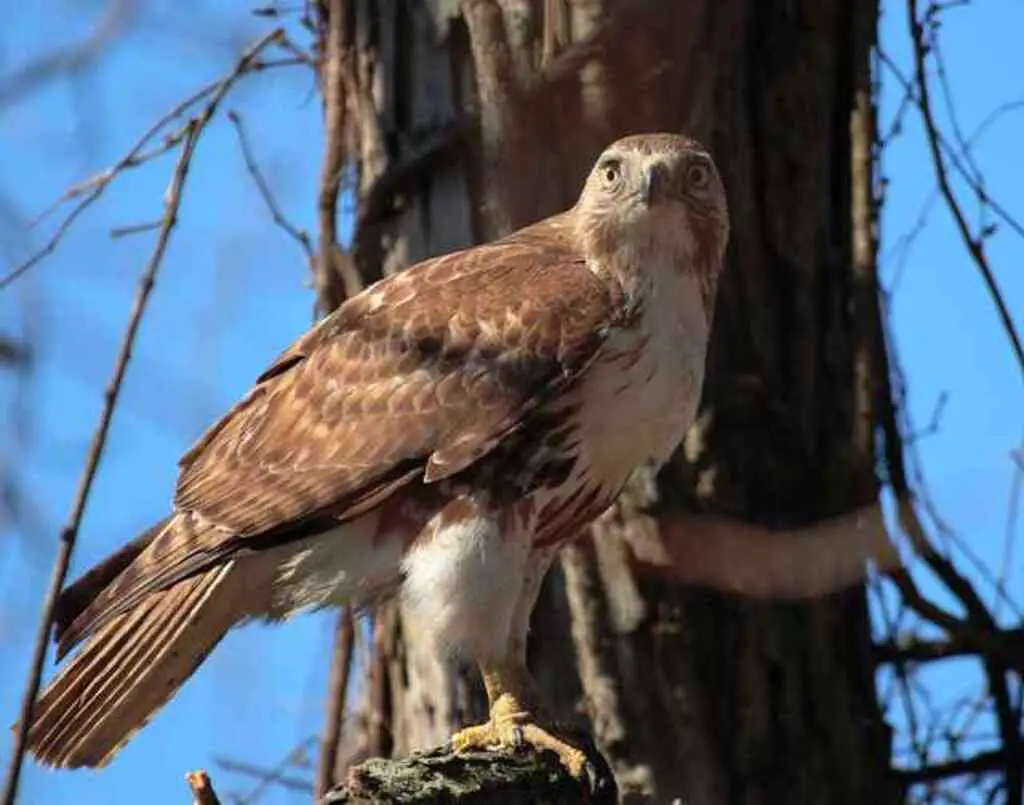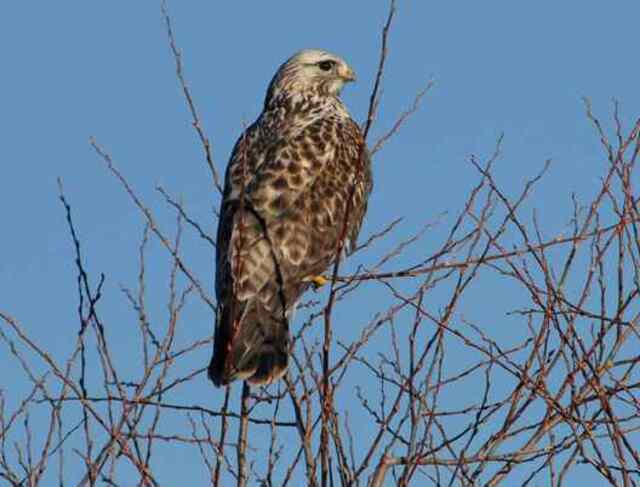In the vast expanse of the sky, hawks are some of the most skilled predators that roam the skies. These birds of prey possess exceptional eyesight, sharp talons, and an exceptional ability to maneuver with their wings, making them formidable hunters.
Their hunting techniques are intricate and highly calculated, making them efficient in their pursuit of prey.
But what makes them such successful hunters? How do hawks hunt and use their unique abilities to capture their prey?
To understand the hunting techniques of hawks, we must first delve into their anatomy and behavior. Hawks are known for their exceptional eyesight, which allows them to spot prey from great distances.
Their sharp talons are also a crucial tool for capturing prey, as they can latch onto their prey with incredible strength and precision.
Their wings are another essential part of their hunting arsenal, which they use to maneuver and chase their prey in the air.
Understanding the unique abilities of hawks is essential to understanding their hunting strategies.
In this article, we will explore how hawks use their exceptional eyesight, sharp talons, and wing maneuverability to capture their prey, their prey selection, and the importance of conservation and protection of these magnificent creatures.
Table of Contents
Key Takeaways
- Hawks use a variety of hunting behaviors such as soaring, perching, and diving, and have exceptional eyesight critical for locating prey from great distances.
- Hawks analyze and calculate potential risks and rewards of each potential prey, and exhibit remarkable ability to identify prey, judge size and speed, and assess potential obstacles and opportunities.
- Speed, agility, intelligence, and precision work together for efficient kills, and their hunting techniques include ambush, pursuit, and cooperative hunting.
- Hawk conservation efforts are crucial, as they face threats such as habitat loss, pesticide use, and illegal hunting, and their preservation is vital to maintain ecosystem balance and ensure their continued existence.
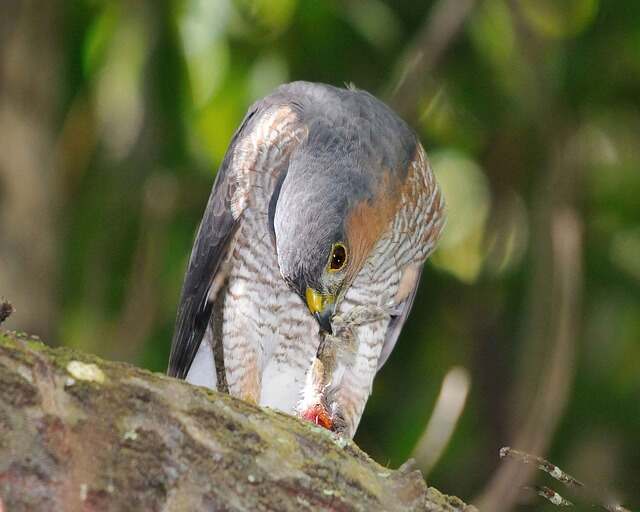
How Do Hawks Hunt?
Hawks hunt using a combination of keen eyesight, agility, and aerial strategies. They employ various techniques such as soaring, perching, and stooping to capture prey.
Hawks primarily target small mammals, birds, and reptiles. With their sharp talons and beaks, they seize and kill their prey swiftly.
Their excellent vision enables them to spot prey from great distances. Hawks employ stealth and surprise, using their aerial prowess to outmaneuver and ambush their targets.
Their hunting methods vary depending on the species and habitat, but overall, hawks are skilled and efficient predators in the avian world.
Introduction to Hawks as Predators
Hawks are skilled predators that have evolved effective hunting strategies to capture prey, making them a formidable force in the animal kingdom.
Their physical characteristics, including sharp talons, hooked beaks, and powerful wings, equip them to hunt a wide range of prey, from small rodents to larger birds.
Hawks use a variety of hunting behaviors, including soaring, perching, and diving, to catch their prey.
They also have the ability to adjust their tactics based on the type of prey they are hunting and the environment in which they are hunting.
Hawks have exceptional eyesight, which is critical for locating prey from great distances. Their eyes are large, with a high density of photoreceptors, allowing them to see prey even in low light conditions.
With their keen sense of vision and impressive hunting skills, hawks are truly remarkable predators.
Exceptional Eyesight
With a keen sense of vision, hawks are able to spot prey from vast distances, as the adage goes, ‘Eyes like a hawk.’ This unparalleled visual acuity is the result of several adaptations that have evolved in hawks over time.
Firstly, hawks have large eyes relative to their head size, which allows for a greater field of vision and better depth perception.
Secondly, their eyes are highly specialized, with a high concentration of cone cells in the retina, which enables them to see fine details and colors.
Lastly, hawks have a fovea, a small area in the retina that is responsible for sharp, central vision. This enables them to focus on a specific object, such as prey, with remarkable precision.
This exceptional eyesight is critical to their hunting strategies, as it allows them to detect prey while flying at great heights and speeds.
With their sharp talons, hawks are able to grasp and kill their prey with ease, which we will explore in the next section.
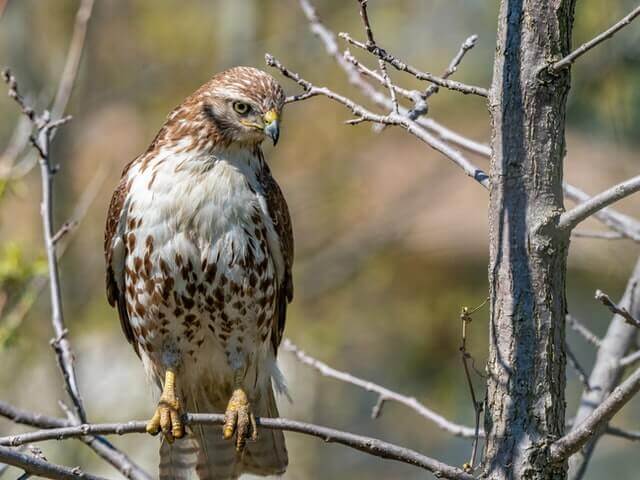
Sharp Talons
The formidable talons possessed by these birds of prey are a testament to their predatory prowess, capable of delivering a deadly blow to their unsuspecting prey.
Talon strength is key to their hunting success, as they are able to grip and hold onto their prey tightly while they deliver the final strike.
The talons are also highly sensitive, allowing the hawk to feel the texture and shape of its prey.
This hunting precision is aided by the fact that hawks have retractable talons, which stay sharp and are kept free from damage when not in use.
The sharpness of these talons is essential for the hawk’s success, as it allows it to pierce the skin of its prey with ease.
With their talons as their primary weapons, hawks are able to take down prey much larger than themselves.
This incredible hunting ability is further enhanced by the hawk’s maneuverability with wings, allowing them to stalk and attack prey with incredible speed and agility.
Maneuverability with Wings
The impressive aerial acrobatics of these birds of prey, enabled by their powerful wings, are a marvel to witness.
Hawks have a wingspan advantage that allows them to soar over large areas in search of prey. They use their wings to quickly maneuver through the air, diving and swooping with precision.
The design of their wings also allows them to maintain a stable position while scanning the ground for potential prey.
Hawks can flap their wings rapidly to gain altitude or hover in one place, waiting for the perfect moment to strike. Their wings also act as shields to protect them from potential predators while in flight.
These aerial acrobatics are essential to a hawk’s hunting success, allowing them to catch prey both on the ground and in the air.
The combination of sharp talons and powerful wings makes them formidable hunters.
Moving from their impressive maneuverability with wings, hawks employ a variety of hunting techniques to capture their prey.
Hunting Techniques
Hunting techniques can be broadly categorized into three main types: ambush hunting, pursuit hunting, and cooperative hunting.
Ambush hunting involves hiding and waiting for prey to come close enough for a surprise attack.
Pursuit hunting involves chasing prey until they can be caught or exhausted.
Cooperative hunting involves working together with other individuals to capture larger prey that would be difficult for a single hunter to take down alone.
These hunting techniques are employed by various animals in the wild and are often adapted to suit their specific physical and behavioral characteristics.
Ambush Hunting
Ambush hunting is a tactic employed by hawks to surprise their prey by waiting in a concealed location. Hawks use a combination of camouflage techniques and prey detection strategies to blend in with their surroundings and remain undetected.
Once the hawk spots its prey, it will swoop down with incredible speed and precision, using its sharp talons to grab and kill its victim. To illustrate this point, consider the following table:
| Hunting Technique | Advantages | Disadvantages |
|---|---|---|
| Ambush Hunting | Surprises prey, requires less energy | Limited to certain environments, requires patience |
| Pursuit Hunting | Can catch faster prey, more versatile | Requires more energy, higher risk of injury |
As you can see, ambush hunting is an effective strategy for hawks in certain environments, where they can blend in and wait for their prey.
However, it does require patience and is limited by the surroundings. Pursuit hunting, on the other hand, allows hawks to catch faster prey and is more versatile, but it also requires more energy and carries a higher risk of injury.
Overall, hawks have a variety of hunting techniques at their disposal, each with its own advantages and disadvantages.
Pursuit Hunting
Pursuit hunting involves a hawk using its incredible speed and agility to chase down its prey through the air. This hunting style is especially effective for hawks that are built for high-speed flight, such as Peregrine Falcons and Cooper’s Hawks.
The advantages of pursuit hunting include the ability to catch prey that is too fast for other hunting styles, such as ambush hunting.
In comparison to other hunting styles, pursuit hunting requires a lot of energy, so hawks that use this technique need to be in excellent physical condition.
Additionally, pursuit hunting is a more aggressive hunting style, which can be dangerous for the hawk if it miscalculates its attack. Nevertheless, pursuit hunting is an impressive display of a hawk’s strength and skill.
With that said, hawks also engage in cooperative hunting, where they work together to catch elusive prey.
Cooperative Hunting
Collaborative efforts among raptors have been observed during hunting endeavors, with multiple individuals working in tandem to catch elusive prey, often referred to as ‘strength in numbers.’
This type of hunting behavior has been observed in species such as Harris’s hawks, where they work together to capture prey that is too fast or too agile for a single bird to catch.
In these situations, one bird may flush out the prey while the others wait in ambush, or they may take turns chasing and cornering the prey until one of them is able to deliver the fatal blow.
Group dynamics also play a role in cooperative hunting, as individual birds must communicate and coordinate their efforts to avoid collisions and ensure that each member of the group has an opportunity to feed.
This strategy has proven to be successful for many raptor species, allowing them to catch prey that would otherwise be too difficult to hunt alone.
Moving on to the next section, understanding how these birds select their prey is a crucial aspect of their hunting behavior.
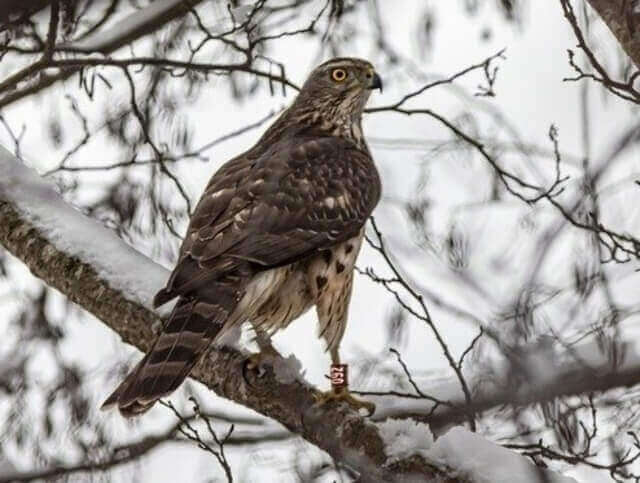
Prey Selection
When selecting prey, hawks exhibit a remarkable ability to analyze and calculate the potential risks and rewards of each potential target.
Hawk hunting strategies are a testament to their exceptional predatory skills and adaptations for prey selection.
Hawks have evolved to be highly efficient hunters who can identify prey from a distance, judge the size and speed of their target, and assess the potential obstacles and opportunities involved in the hunt.
To make this process more relatable, consider the following table that illustrates the different criteria hawks use when selecting prey:
| Criteria | Explanation |
|---|---|
| Movement | Hawks are attracted to prey that moves, such as rodents or birds. |
| Size | Hawks prefer prey that are smaller than themselves, but not too small as to be insignificant. |
| Visibility | Hawks target prey that are visible and not hidden by vegetation or other obstructions. |
| Vulnerability | Hawks look for prey that are vulnerable, such as injured or sick animals. |
| Location | Hawks target prey that are located in open areas where they can easily swoop down and catch them. |
Understanding these criteria can help us appreciate the sophistication of hawks’ hunting behaviors and the specialized adaptations they possess.
Hawks are a vital part of the ecosystem, and their conservation and protection are crucial for maintaining biodiversity and ecological balance.
Conservation and Protection
The discussion on conservation and protection of hawks encompasses two key points:
- the threats to hawk populations and efforts to protect and preserve them.
The threats to hawk populations include habitat loss, illegal hunting, and pollution, which have resulted in declining numbers of some hawk species.
Efforts to protect and preserve hawks involve conservation measures such as habitat restoration, captive breeding, and legislation to regulate hunting and pesticide use.
Threats to Hawk Populations
Hawk populations face numerous threats, including habitat loss, pesticide use, and illegal hunting, which are causing a decline in their numbers and endangering their survival.
As human populations expand and consume more land, hawks are losing their natural habitats and food sources.
Pesticide use also poses a significant threat to hawks, as they can accumulate in their bodies, causing reproductive issues and other health problems.
The illegal hunting of hawks for sport or commercial trade further exacerbates their declining population, and many species of hawks are now listed as endangered.
It is imperative that conservation efforts are implemented to protect and preserve these majestic birds of prey.
The next section will explore the various efforts being made to safeguard the future of hawks and their ecosystems.
Efforts to Protect and Preserve Hawks
Efforts to protect and preserve hawk populations have resulted in a 90% increase in the number of breeding pairs of Red-shouldered Hawks in Florida’s Everglades National Park.
Hawk conservation efforts have been in place for several decades now, and they have included various initiatives such as habitat preservation, nest box installation, and raptor education programs.
These initiatives aim to mitigate the impact of habitat loss, pollution, and hunting on hawk populations.
In addition, several organizations have been established to monitor hawk populations, such as the Hawk Migration Association of North America, which has been tracking hawk migration patterns for over 50 years.
Other organizations, such as the Peregrine Fund, have focused on the reintroduction of endangered hawk species into the wild, promoting genetic diversity and preventing extinction.
Efforts to protect and preserve hawks have also led to the establishment of protected areas, such as the Hawk Mountain Sanctuary in Pennsylvania, which serves as a migration stopover and breeding site for several hawk species.
These conservation efforts have been successful in preventing the decline of many hawk species, but much still needs to be done to address the ongoing threats to their survival.
Ultimately, the preservation of hawk populations is vital to maintain the balance of ecosystems and ensure the continued existence of these magnificent birds of prey.
In conclusion and final thoughts, while the efforts to protect and preserve hawk populations have been successful, more needs to be done to mitigate the impact of habitat loss, pollution, and hunting on these birds.
It is essential to continue monitoring hawk populations, establishing protected areas, and educating the public about the importance of hawk conservation.
By doing so, we can ensure the continued existence of these beautiful birds of prey and maintain the balance of our ecosystems.
Frequently Asked Questions
How do hawks communicate with each other during a hunt?
Visual cues and vocalizations are how hawks coordinate during a hunt, adapting to different species they prey on.
Predator, prey relationships are crucial for the success of the hunt. Scientifically analyzing their methods reveals an engaging and detailed process for an audience seeking freedom.
Do male and female hawks have different hunting strategies?
Male and female hawks exhibit distinct tactics during hunting, with females being larger and more powerful, and males being faster and more agile. They may have different prey preferences, but more research is needed to confirm this.
Can hawks hunt in the dark?
Hawks have adaptations for nighttime hunting, such as large eyes, specialized retinas, and a high number of rods to detect low light. They also use their sharp talons to grab prey in the dark.
How do hawks know when to migrate during different seasons?
Hawks have seasonal instincts, relying on environmental cues such as changes in daylight and temperature to determine when to migrate.
These cues trigger hormonal changes that initiate the migration process, allowing hawks to navigate long distances with remarkable accuracy.
What is the lifespan of a hawk in the wild?
The lifespan of hawks in the wild is influenced by various health factors, including disease and predation. Habitat and diet also play significant roles in determining their lifespan. An engaging scientific analysis reveals the complexities of their survival.
Conclusion and Final Thoughts
In summary, understanding the hunting strategies of hawks provides valuable insight into the complex and sophisticated behavior of these birds of prey.
It is clear that hawks are highly skilled hunters, using a combination of speed, agility, and intelligence to capture their prey.
Efforts to protect and preserve these birds are crucial to maintaining the delicate balance of our ecosystem.
Reflections on the importance of conservation and the implications of losing these apex predators cannot be overstated.
As we continue to study and learn about the behavior of hawks, we gain a greater appreciation for the natural world and the wonders it holds.
Through our efforts to protect and preserve these magnificent creatures, we can ensure that future generations will have the opportunity to witness the incredible hunting strategies of hawks and the vital role they play in our world.
| Aspect | Speed | Agility | Intelligence | Precision |
|---|---|---|---|---|
| Attributes | Swift movements | Acrobatic maneuvers | Strategic planning | Accurate strikes |
| Benefits | Enables quick pursuit | Facilitates evasive action | Enhances hunting success | Results in efficient kills |
As evidenced by the table above, hawks possess a combination of physical and cognitive abilities that allow them to be highly effective hunters.
Their speed, agility, intelligence, and precision work together to facilitate quick pursuit, evasive action, strategic planning, and accurate strikes, resulting in efficient kills.
These attributes are not only fascinating to observe, but also vital to the survival of the hawk species.
It is imperative that we continue to reflect on the importance of conservation and the implications of losing these apex predators, and take action to protect and preserve them for future generations to appreciate and admire.

